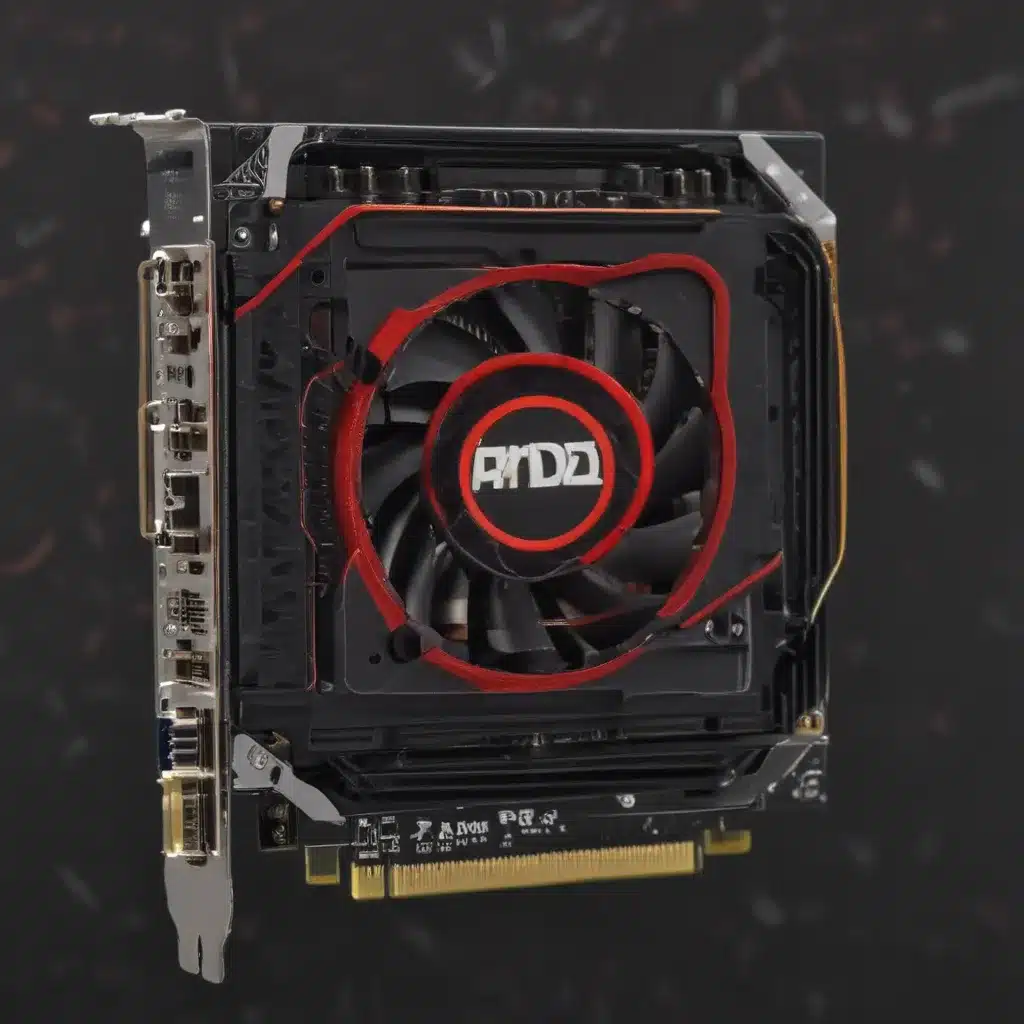The Need for Speed
Have you ever found yourself staring at the screen, watching your frame rates dip and stutter, as your beloved games refuse to run as smoothly as you’d hoped? Well, my friend, the solution to your woes may lie in the power of overclocking.
As a self-professed tech enthusiast, I’ve spent countless hours tinkering, tweaking, and pushing the limits of my hardware. And let me tell you, there’s nothing quite like the thrill of squeezing that extra bit of performance out of your components. Today, we’re going to dive into the world of GPU overclocking, specifically focusing on AMD GPUs, and uncover the secrets to boosting your frame rates and achieving that silky-smooth gaming experience you’ve been craving.
Unlocking the AMD GPU’s Potential
Now, I know what you might be thinking – “Overclocking? Isn’t that dangerous?” Well, fear not, my fellow PC enthusiast. With the right approach and a bit of caution, overclocking your AMD GPU can be a safe and rewarding endeavor.
The key is to understand the inner workings of your graphics card and make gradual, incremental adjustments. [1] Just like a runner exceeding their typical physical limits to sprint faster, your GPU can be pushed beyond its factory settings to deliver more power. By increasing the clock speeds and memory frequencies, you can unlock that extra performance that’s been hiding within your AMD GPU, waiting to be unleashed.
Laying the Groundwork
Before we dive into the nitty-gritty of overclocking, it’s important to establish a solid foundation. [2] I recommend starting by benchmarking your system’s default performance. This will give you a baseline to compare your overclocked results against, ensuring you’re actually making meaningful improvements.
Next, you’ll want to ensure your cooling solution is up to the task. An AMD GPU can generate a significant amount of heat, and keeping those temperatures in check is crucial. Make sure you have a reliable cooling system, whether it’s a high-quality air cooler or an efficient liquid cooling setup.
The Overclocking Journey
Alright, now that we’ve got the groundwork laid, let’s get into the fun part – the actual overclocking process. [1] I’ll be using MSI Afterburner, my personal tool of choice, but the general steps should be similar across various overclocking utilities.
First, fire up MSI Afterburner and take a look at the key metrics – your current GPU and memory clocks, voltage, temperature, and power limit. These will be our touchpoints as we start to push the boundaries.
Next, let’s start slowly. Increase the power limit by 10% and the temperature limit to its maximum. This gives us a bit of headroom to work with. Now, it’s time to start increasing the core clock in increments of 50 MHz. After each adjustment, hit the “Apply” button and run a stress test to ensure stability.
As you gradually push the clock speeds higher, keep a close eye on your temperatures. [3] Ideally, you’ll want to keep things below 80°C to maintain optimal performance and prevent any throttling. If you start encountering crashes or visual artifacts, dial it back a notch or two.
But don’t stop there! The memory clock is another area ripe for optimization. Start by increasing it in steps of 50 MHz and see how your games respond. [4] Some titles may benefit greatly from a memory overclock, while others might exhibit issues. It’s all about finding the sweet spot for your specific setup.
Putting it to the Test
Now that you’ve meticulously tuned your AMD GPU, it’s time to see the fruits of your labor in action. [5] Fire up your favorite games and bask in the glory of those buttery-smooth frame rates. Gone are the days of stuttering and lag – your system is now a lean, mean, gaming machine.
And the best part? You didn’t have to break the bank to achieve this level of performance. [6] By leveraging the power of overclocking, you’ve unlocked a whole new dimension of gameplay, all without the need for a costly hardware upgrade.
Staying Safe and Sane
Of course, as with any hardware tinkering, it’s essential to exercise caution. [7] While overclocking is generally safe, pushing your components too far can lead to instability, crashes, and even potential damage. Always monitor your temperatures closely and don’t be afraid to take a step back if things start to get too hot.
Remember, your system’s well-being is paramount. [8] Complement your overclocking efforts with a comprehensive software optimization routine, ensuring your entire setup is running at peak performance. With the right balance of hardware and software tweaks, you’ll be able to unleash the true potential of your AMD GPU and enjoy gaming bliss like never before.
So, what are you waiting for? Grab that overclocking tool, fire up your rig, and let’s see just how much extra FPS you can squeeze out of your AMD GPU. The journey to smooth, high-performance gaming starts now!
[1] Knowledge from https://www.reddit.com/r/overclocking/comments/167wvog/just_need_to_squeeze_5_fps_out_of_my_5800x/
[2] Knowledge from https://community.amd.com/t5/processors/amd-fx-8350-performance/m-p/529101
[3] Knowledge from https://www.reddit.com/r/buildapc/comments/zoyh0m/2_questions_whats_the_general_concensus_on/
[4] Knowledge from https://www.quora.com/Does-overclocking-a-GPU-increase-FPS-for-smoother-and-sharper-graphics
[5] Knowledge from https://www.dell.com/support/kbdoc/en-us/000123108/maximizing-your-gaming-performance
[6] Knowledge from https://forums.tomshardware.com/threads/why-people-say-overclocking-gpu-is-not-worth-it-for-new-gen-gpu.3740743/
[7] Knowledge from https://www.avast.com/c-how-to-overclock-gpu
[8] Knowledge from https://www.avg.com/en/signal/9-ways-boost-gaming-rig













